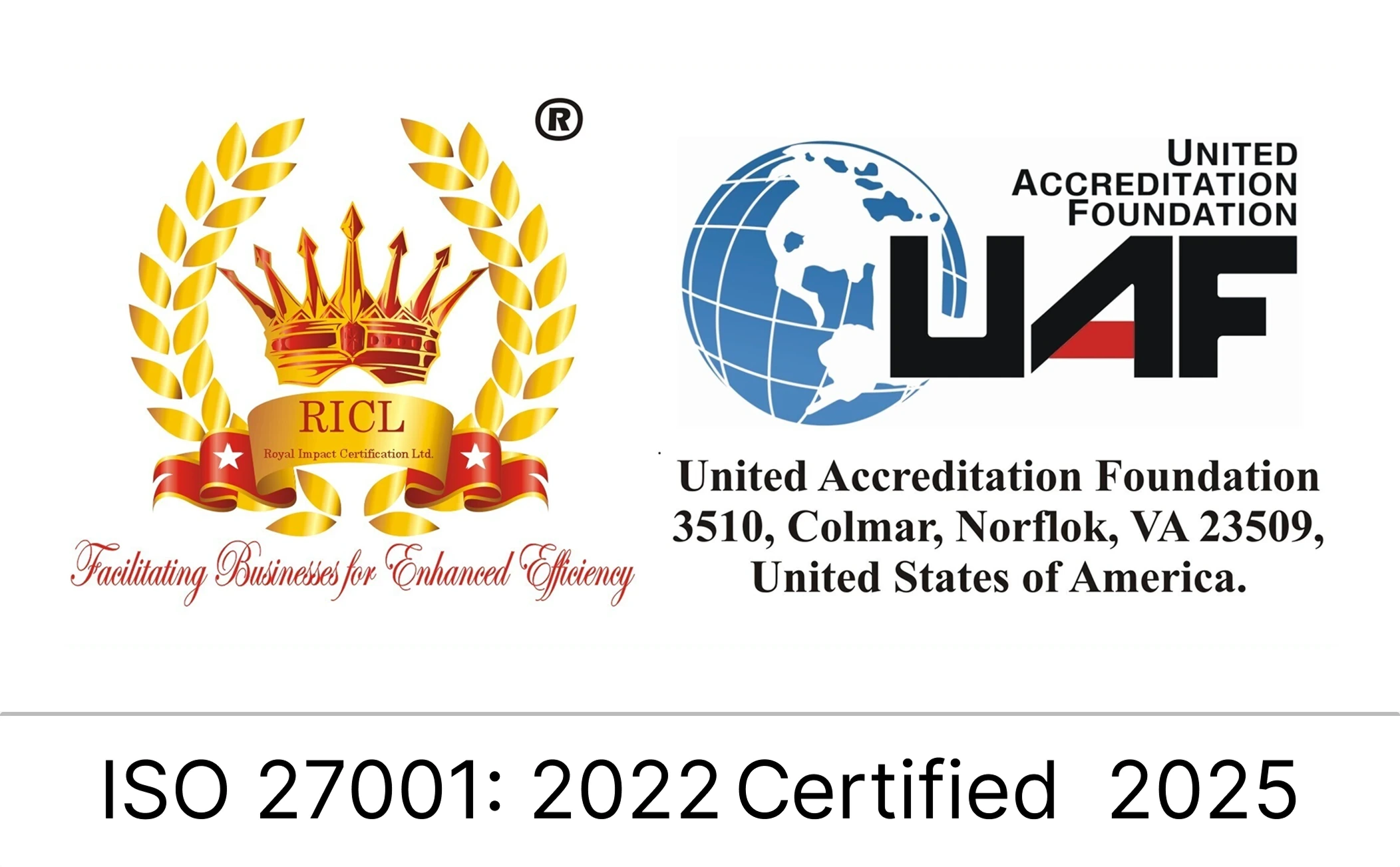Why Your SOC 2 Audit Fails Without Traceable Threat Models

Most SOC 2 failures don’t happen because your controls are weak, but because you can’t prove what you actually did. Threat models are the perfect examples. Teams talk about them, maybe even run a workshop or two, but when it’s time to show evidence, there’s nothing concrete.
If your threat models aren’t traceable, then your audit is already in trouble. You can’t demonstrate how risks were identified, what mitigations were applied, or whether those mitigations are still valid. Can you see how it’s a credibility issue? Auditors assume the gaps they see are only the tip of the iceberg, and that can put your entire security program under question.
Table of Contents
- Threat modeling is now table stakes for SOC 2 compliance
- Most threat models fail because they are not traceable
- Traceable threat models reduce risk and make audits faster
- You can build traceable threat models without slowing down engineering
- Checklist: What auditors look for (and how you can be ready)
- SOC 2 auditors want proof
Threat modeling is now table stakes for SOC 2 compliance
Auditors expect to see how your organization identifies risks, applies mitigations, and verifies outcomes in a way that directly aligns with the Trust Services Criteria. Security, Confidentiality, and Processing Integrity are the areas where this matters most.
How threat modeling maps to SOC 2 criteria
Auditors expect to see how your organization identifies risks, applies mitigations, and verifies outcomes in a way that directly aligns with the Trust Services Criteria. Security, Confidentiality, and Processing Integrity are the areas where this matters most.
- Security (Logical and Physical Access Controls)
Threat modeling surfaces weaknesses in authentication, authorization, and IAM configurations.
- Example: Identifying an internal service exposed due to overly permissive IAM rules.
- Audit tie-in: Showing how that risk was logged, mitigated, and validated demonstrates compliance with access control requirements.
- Confidentiality (Protecting sensitive data in transit and at rest)
Data flow analysis in threat models reveals exposure points where sensitive information can be leaked or mishandled.
- Example: Detecting that customer data moves unencrypted between microservices.
- Audit tie-in: Documenting the finding, implementing encryption, and proving enforcement maps directly to Confidentiality criteria.
- Processing Integrity (Accuracy, completeness, and reliability of system processing)
Threat models catch risks that could compromise the integrity of business processes.
- Example: Highlighting an insecure API design that could allow data tampering or replay attacks.
- Audit tie-in: Linking mitigations to specific controls provides evidence that systems process data as intended.
Why documentation alone fails
Auditors are explicit in readiness checklists: they want structured and repeatable processes, instead of informal notes or one-off workshops. A static policy document that says we ran a threat model is not defensible. What they want to see is:
- Traceability: A clear line from risk identification to mitigation to verification.
- Auditability: Evidence that the process is repeatable and consistently applied.
- Accountability: Ownership for each finding and a record of the decisions made.
What matters is traceability. If you cannot show how a risk was identified, what decision was made, what control was applied, and how it was validated, then as far as the auditor is concerned, the work never happened.
Most threat models fail because they are not traceable
CISOs already know the problem. Threat modeling is supposed to give visibility into design-level risks, but in most organizations it collapses under the weight of bad practices. Models are static, scattered across documents, and dependent on a few subject matter experts who hold the knowledge in their heads. When auditors ask for evidence, what surfaces is usually outdated or incomplete.
Where traditional threat modeling breaks down
- Whiteboard sessions with no outputs: Teams run brainstorming sessions, but the results never make it past sticky notes or slides. When auditors ask for documentation, there is nothing concrete to show.
- Stale Confluence pages: Threat models get written once and then forgotten. Six months later the architecture has changed, but the diagrams and assumptions in Confluence remain the same. Auditors routinely flag this gap as evidence that controls are not operating effectively.
- Spreadsheets that go out of sync: Some teams track threats and mitigations in spreadsheets. These are rarely updated after initial reviews, which means findings no longer reflect the current environment. During audits, this looks like a process without accountability.
- Overreliance on SMEs: A handful of security architects or senior engineers run the process. If they move on or are unavailable, the knowledge is lost. Auditors call this a lack of repeatability and resilience in security governance.
What traceability actually means
Traceability is the difference between a threat model that passes scrutiny and one that does not. A traceable threat model has three characteristics:
- Risk linkage: Each identified threat ties back to a specific system component, data flow, or design element.
- Mitigation tracking: Every risk has a mapped control or remediation, with clear ownership.
- Audit evidence: Reviews are timestamped and versioned so you can prove when they were run and what changed.
Untraceable threat models are invisible during audits. If you cannot show the connection between a risk, a design decision, and a mitigation, the model has no value to the auditor. Worse, it has no value to your security posture either. A static document that does not reflect the system you are running today cannot protect it.
Traceable threat models reduce risk and make audits faster
Traceability is not just about satisfying auditors. You need to also focus on creating a security process that reduces risk in real time while cutting the cost and friction of compliance. Teams that treat threat models as living and traceable artifacts see measurable improvements in both security outcomes and audit efficiency.
How traceability reduces real security risk
- Earlier detection of design flaws: Automated and traceable threat models catch risks at the design stage before code is deployed. This avoids expensive remediation cycles in production.
- Faster mitigation tracking: Each identified risk is linked to a control or remediation with an owner. This ensures issues are not just found but resolved.
- Better alignment between security and engineering: When models are traceable, engineers get actionable feedback directly tied to their designs. This removes ambiguity and accelerates fixes.
How traceability makes audits easier
- Fewer rounds of back-and-forth: Auditors no longer need to chase missing documentation because evidence of risk identification and remediation is already logged.
- Faster evidence collection: Timestamped and versioned reviews provide clear proof of when and how risks were addressed.
- Reduced post-audit remediation: When every risk is linked to a verified control, there are fewer findings to patch after the fact.
Traceable threat models are a force multiplier. They reduce the likelihood of real security failures and eliminate wasted cycles during audits. With traceability, you ship more secure designs and walk into audits prepared with defensible evidence.
You can build traceable threat models without slowing down engineering
Traceability does not mean adding more meetings or forcing developers into new workflows. Actually, the most effective teams integrate threat modeling into the artifacts and tools that engineers already use. Here’s how traceability fits into existing workflows:
Extracting models from real design artifacts
Modern platforms like SecurityReview.ai analyze existing documents and conversations to generate threat models.
- Architecture diagrams in Confluence or Google Docs.
- Slack threads from design discussions.
- Screenshots or recordings from whiteboard sessions.
- System descriptions and functional specs already in circulation.
Embedding in developer workflows
Threat models are only useful if they reach engineers where they work. By surfacing findings inside PRs, Jira tickets, or CI pipelines, risks are addressed during active development rather than in postmortem reviews.
- Developers get actionable items tied directly to their code or design changes.
- AppSec teams focus on validation instead of rebuilding models by hand.
Continuous updates as systems change
A static model is outdated the moment a new API, service, or integration is added. Continuous threat modeling means the model refreshes automatically when inputs change.
- New design docs trigger reviews automatically.
- Changed data flows update the model without manual intervention.
- Risks are reprioritized as the system evolves.
Clear ownership and accountability
Traceability also depends on knowing who is responsible for each risk. Automated tracking links findings to owners, creating accountability without extra overhead.
- Every mitigation is assigned to an individual or team.
- Progress can be tracked in the same systems where work is already managed.
Audit-ready evidence built in
Traceability means more than a diagram. It means every identified risk can be tied back to design elements, mitigations, and verification steps with timestamps.
- Risks are mapped to controls and assigned to owners.
- Reviews are versioned and time-stamped for defensibility.
- Exportable reports give auditors direct visibility without chasing documents.
Instead of holding a quarterly workshop and hoping the notes survive in Confluence, you have a continuous record of how threats were identified, how controls were applied, and when they were validated. Engineers stay focused on building, while CISOs and auditors gain confidence that security reviews are both current and defensible.
Traceability does not require more meetings. It requires smarter integration into the systems where work is already happening. When threat models are extracted automatically, updated continuously, and logged with audit-ready evidence, you meet compliance requirements while strengthening your actual security posture.
Checklist: What auditors look for (and how you can be ready)
Auditors are not impressed by general statements or outdated documents. They want traceable proof that your security process works and that it maps directly to SOC 2 Trust Services Criteria. Use this checklist as a readiness gauge. If you cannot answer these questions with confidence today, your SOC 2 exposure is real.
- Can you show how threat models map to Trust Services Criteria?
Auditors expect a clear line between identified risks and specific SOC 2 categories such as Security, Confidentiality, and Processing Integrity.
- Are mitigations tracked and tied to specific risks?
Every threat must link to a defined mitigation or control. Auditors will ask to see ownership and status.
- Can you export evidence of the review history?
Auditors want defensible records. That means versioned models, timestamps, and logs showing when reviews were run and how findings changed over time. A static PDF will not satisfy this requirement.
- Are updates continuous or one-off exercises?
SOC 2 expects repeatability and consistency. If you only run threat models once per year or before a big release, auditors will see it as insufficient. Continuous updates tied to actual system changes demonstrate maturity.
- Can you show involvement from both engineering and security?
Traceability requires collaboration. Auditors look for evidence that security findings are integrated into development workflows and that engineers participated in applying mitigations.
SOC 2 auditors want proof
Most security leaders still treat threat modeling as a compliance chore. And that’s why audits stall and design risks stay buried. The overlooked reality is that regulators and customers are moving toward higher expectations of traceability, and once that becomes standard, the window to get ahead of it closes fast.
In the next 12 to 18 months, expect auditors to demand stronger evidence of continuous updates and direct alignment with controls, not static artifacts. Engineering leaders who wait for that shift will end up retrofitting security under pressure. Those who build traceability into everyday workflows now will not only pass audits faster but will also reduce exposure where it matters most: at the design layer.
SecurityReview.ai was built with this in mind. It connects design reviews directly to SOC 2 Trust Services Criteria, maps risks to controls, and generates audit-ready reports without extra work from your teams. That means traceability and defensibility are built into the process instead of being forced at audit time.
My point is this: threat modeling without traceability no longer counts. Security and compliance leaders who act now can set a higher standard, prove defensibility, and ship safer systems without delay.
FAQ
What is SOC 2 and why does it matter for security teams?
SOC 2 is an auditing framework that evaluates whether your systems meet the Trust Services Criteria for Security, Availability, Confidentiality, Processing Integrity, and Privacy. For security teams, it is both a compliance requirement and a proof point for customers that your security practices are consistent and defensible.
Why do SOC 2 audits fail when threat models are not traceable?
SOC 2 requires evidence that risks are identified, mitigated, and reviewed. When threat models are undocumented, outdated, or scattered across systems, auditors cannot connect risks to controls. This lack of traceability often results in audit findings that highlight coverage gaps and process failures.
What does “traceable” mean in threat modeling?
Traceable threat models link every identified risk to a system component, a documented mitigation, and a verification timestamp. This creates a clear audit trail that shows how risks were managed and when reviews were performed. Without these links, threat models have no defensibility in an audit.
How does threat modeling map to SOC 2 Trust Services Criteria?
Threat modeling supports multiple SOC 2 criteria: Security: Identifying flaws in authentication, authorization, and IAM. Confidentiality: Revealing unprotected data flows or weak encryption. Processing Integrity: Detecting risks that could impact the accuracy and reliability of transactions or business processes. By tying risks directly to controls under these criteria, you create audit-ready evidence.
What are common reasons threat models fail during audits?
Threat models fail when: They only exist as whiteboard sessions with no outputs. Documentation in Confluence or PDFs is outdated compared to current systems. Risks and mitigations are tracked in spreadsheets that are not updated. The process depends entirely on a few subject matter experts, with no repeatability.
How do traceable threat models reduce audit time?
Traceable models reduce the time spent on audits by providing versioned, timestamped records of risks and mitigations. This eliminates back-and-forth with auditors, shortens evidence collection, and reduces post-audit remediation work.
Can traceable threat models also improve real security outcomes?
Yes. Traceable threat models help teams catch design flaws earlier, track mitigations more effectively, and ensure controls are verified. In practice, organizations using automated traceable threat models report faster reviews, higher coverage, and fewer missed design flaws.
How do traceable threat models integrate with engineering workflows?
Modern platforms extract threat models from existing artifacts such as design docs, Slack threads, or Confluence pages. They update continuously as systems change and push findings directly into tools developers already use, like pull requests or Jira tickets. This ensures security fits naturally into the workflow instead of creating friction.
How does SecurityReview.ai help with SOC 2 traceability?
SecurityReview.ai connects threat models directly to SOC 2 Trust Services Criteria. It automatically links risks to controls, tracks mitigations, and generates exportable audit reports. This ensures traceability without adding extra work for engineering or security teams.
What does audit-ready threat modeling evidence look like?
Audit-ready evidence includes: Risks mapped to controls and assigned to owners. Timestamped and versioned reviews. Exportable reports showing continuous updates. Demonstrated involvement from both engineering and security teams.






.png)
.png)
.png)






